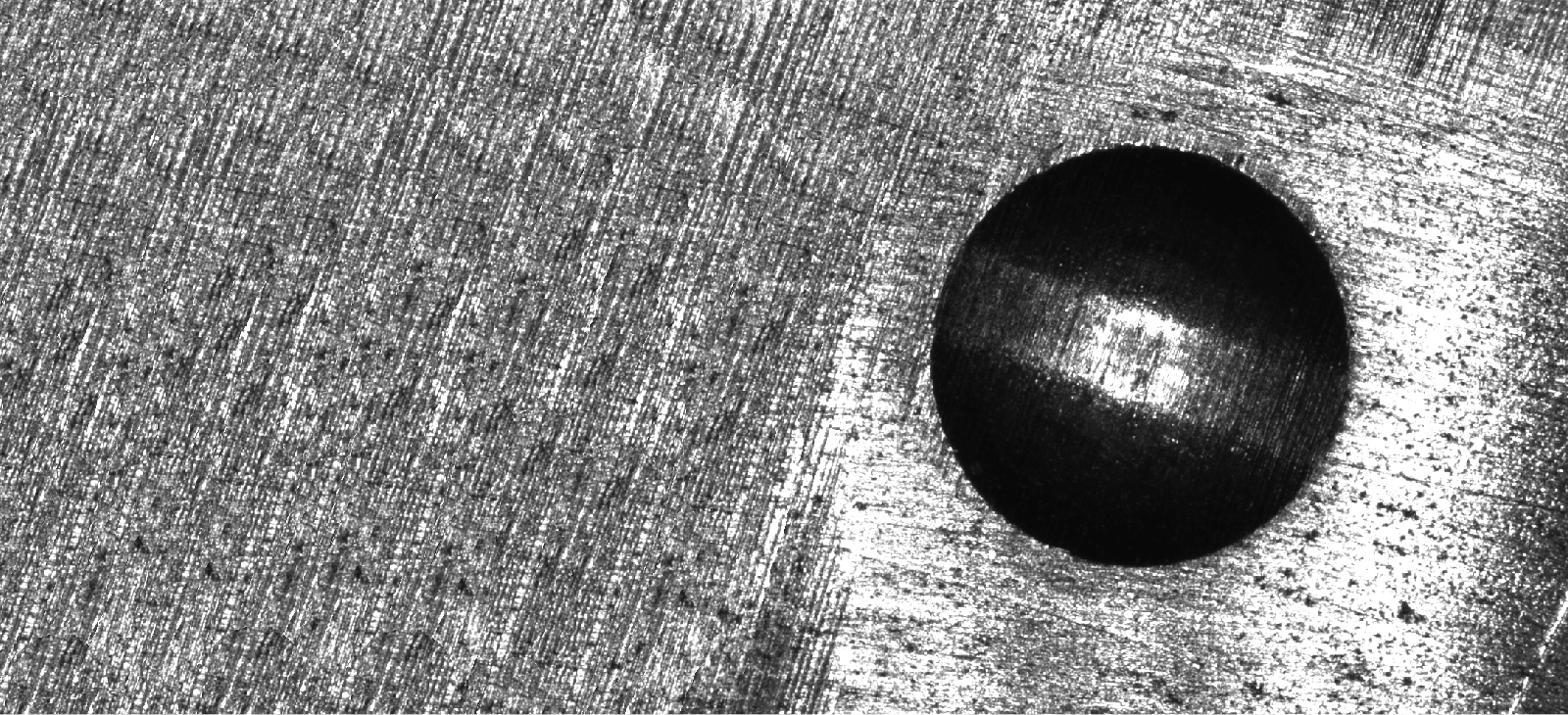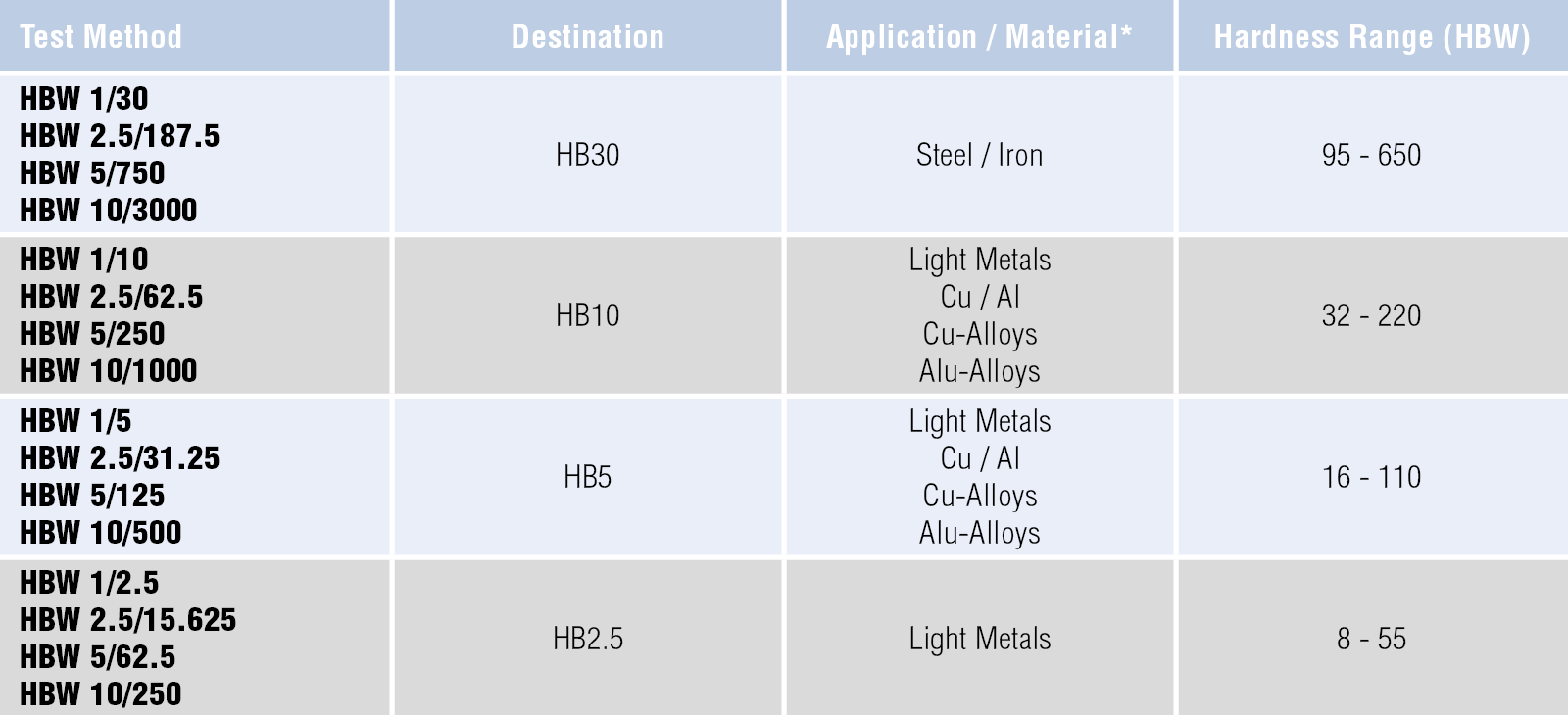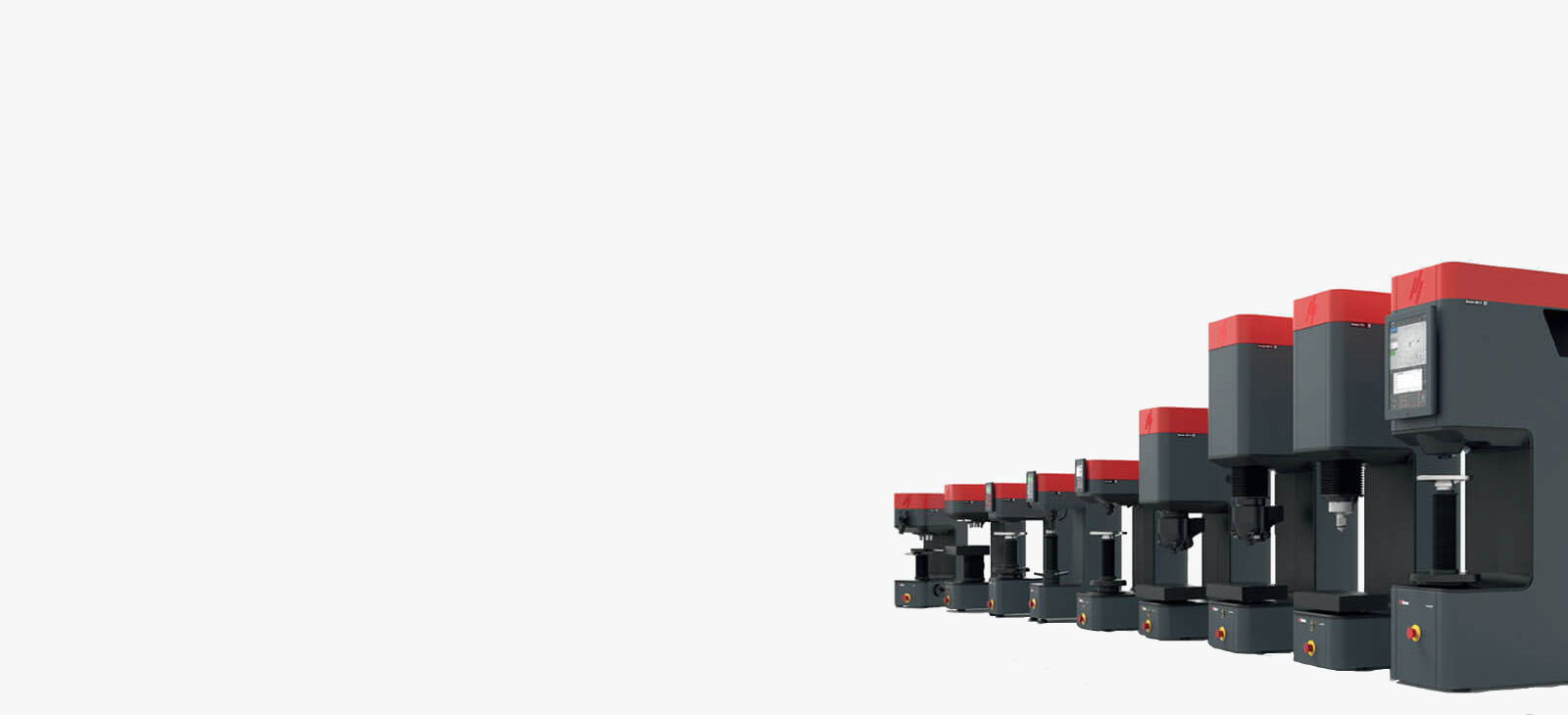DEFINITION OF THE BRINELL HARDNESS TEST
The Brinell hardness test was originally developed in the late 1800s by the Swedish engineer of the same name. He wanted to find a method to control the quality/hardness of steel. His solution was to press a railway wheel-bearing ball into the material and then measure the size of the mark it left. The method proved reliable and in 1900 the Brinell hardness test was officially born.
Today, the Brinell test is performed using a Brinell hardness test unit. The machine presses a tungsten carbide ball into the sample, and then optically measures the diameter of the impression.
- Indenter sizes: 1, 2.5, 5 and 10 mm
- Loads: From 1 kgf to 3000 kgf
- Maximum hardness: 650 HBW
A hardness test for larger samples
As the Brinell hardness test (HBW) indentation leaves a relatively large impression, the Brinell hardness test is better suited to larger samples with a coarse or inhomogeneous grain structure, such as castings and forgings.
Good to know
HBW stands for Hardness Brinell Wolfram carbide. Wolfram carbide (= tungsten carbide) underlines that newer Brinell standards call for the use of tungsten carbide balls, as opposed to the (softer) steel balls previously used (HBS). Values will differ at higher hardness.



















